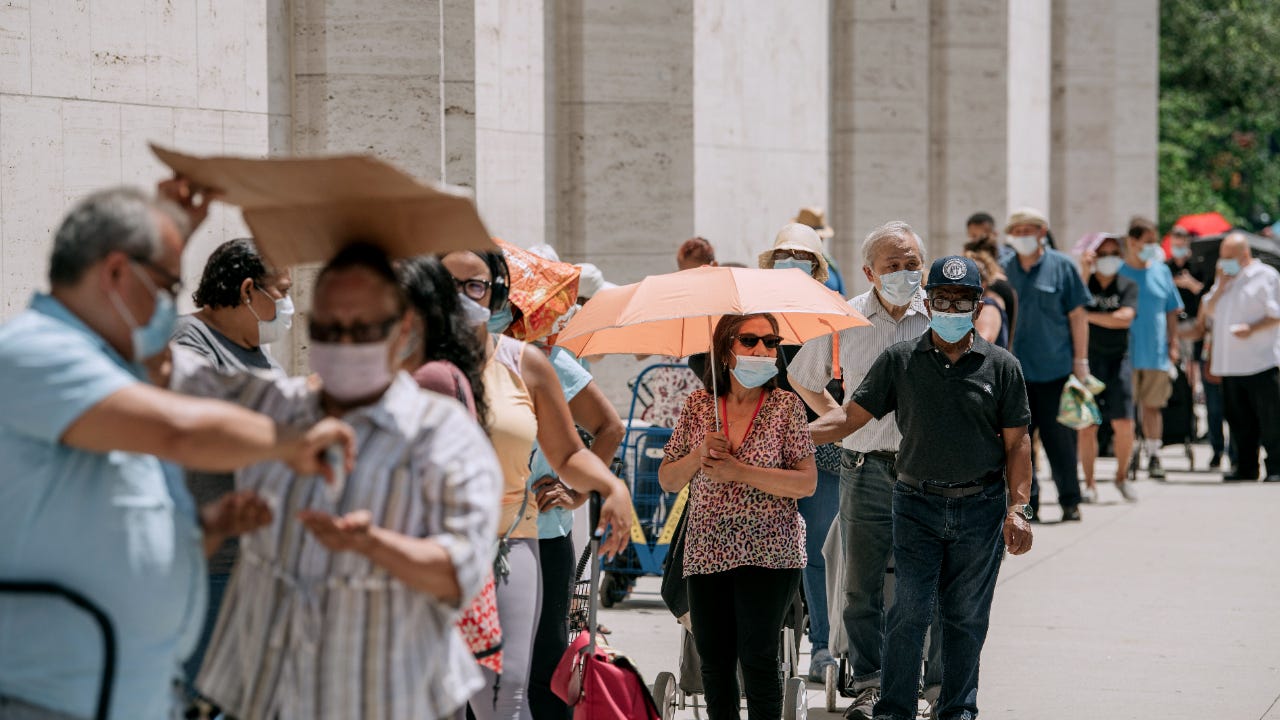Survey: Those hit financially by COVID-19 paying 4 times more in bank fees

Americans whose income has declined due to the COVID-19 pandemic are feeling the brunt of higher bank fees, too. Those with checking accounts at banks or credit unions are paying more than four times as much as those who haven’t been hit financially, according to a new Bankrate survey.
Those hit financially by the pandemic saw average monthly charges for their checking account of $11.41, including service charges, ATM fees and overdraft expenses. That compares to just $2.79 on average for those whose income has not been affected by the crisis.
For the survey overall, the monthly average for checking account fees was $7.65. Minorities and millennials too were among the groups paying more than the average.
“Those whose personal finances have been adversely affected by the pandemic have been hit with a double whammy of higher banking fees,” says Mark Hamrick, Bankrate senior economic analyst. “Unemployment or loss of income can be devastating, but one should try to avoid adding financial insult to injury by paying too much in banking fees when so many less expensive options abound.”
Bankrate surveyed 2,743 American adults about their bank, account fees and use of their bank’s mobile apps. Below are the main findings from the survey.
Key takeaways:
- Those whose income was impacted due to the pandemic pay bank fees four times higher than those not impacted.
- Almost 64 percent of those with checking accounts increased their use of mobile or other payments technology during the pandemic.
- The average checking customer has been with their financial institution for an average of 14 years.
Bank fees differ significantly if your income was hit
Bankrate’s survey shows that those who have seen their income decline due to the pandemic also tend to pay higher bank fees. In fact, on average they’re paying more than four times as much ($11.41) as those whose income remained unaffected by the pandemic ($2.79).
Despite these results, a sizable majority of all respondents (72 percent) said that they paid no monthly fees at all. And more than 7 percent paid less than $5 per month. So in total, nearly 80 percent of respondents paid less than $5 in fees for their account each month.
Age was also related to how much a person paid for their bank account, with younger customers paying significantly more than older ones. Overall, millennials paid the most for their account, on average $15.32 each month, with Generation Z not far behind.
Among all checking account holders, the monthly average charge totaled this amount for each age group:
- Generation Z (ages 18-23) paid $13.89.
- Millennials (24-39) paid $15.32.
- Generation X (40-55) spent $6.18.
- Baby boomers (56-74) spent $2.38.
- Silent Generation (75 and older) paid $1.59.
Racial background also played into the results, with Black and Hispanic customers reporting fewer no-fee accounts and higher fees than the overall average. While white checking account holders paid $5.37 per month in fees, Blacks and Hispanics paid more than double, at $12.07 and $13.96, respectively.
Both Blacks and Hispanics have suffered higher rates of unemployment and lost income during the current economic downturn.
Fees varied significantly by geography as well. Compared to the average $7.65 paid by checking account holders overall, here’s what the four major regions of the U.S. paid:
- The Northeast paid an average of $8.82 per month.
- The Midwest paid an average of $4.69 per month.
- The South paid an average of $9.08 each month.
- The West paid an average of $7.10 each month.
While the latest survey showed most Americans taking advantage of fee-free checking, a recent Bankrate survey showed the average monthly fee for interest checking and the balance requirement to avoid paying a fee hit new record highs of $15.50 and $7,550, respectively.
64 percent of respondents increased use of mobile banking and other tech during COVID-19 pandemic
With the decreased ability to go to the bank and risks associated with that, many of the survey respondents shifted their banking activities to mobile apps and other methods that might reduce risks. The survey found that almost 64 percent of Americans with checking accounts at banks or credit unions report adjusting their payment practices as a direct result of the pandemic.
The survey asked participants which of the following they had done more frequently, and here were the overall responses:
- More than 25 percent of respondents increased their check deposits by mobile app.
- More than 23 percent increased their use of peer-to-peer payment methods, such as Zelle or Venmo.
- About 21.5 percent raised their use of contactless payment methods, such as Apple Pay or Google Pay.
- More than 45 percent said they increased their bill-paying online.
- More than 36 percent said they hadn’t increased any of these activities in response to the pandemic.
Younger participants were generally more likely to have increased their banking activities via mobile than older generations. However, when it came to paying more bills online, all groups reported significant increases in their activity, ranging from 43 percent to 48 percent.
“Many consumers are playing it smart by, in effect, engaging in social distancing with their banking and payments technologies,” says Hamrick, who points out that consumers have mobile options that can help them manage their account effectively.
“Once we’ve emerged from the pandemic and the economic downturn, it will still be wise to take advantage of newer mobile banking technologies not only to save time, but to help stay on top of account balances and fees as well as the potential for potentially costly overdrafts and fraud,” Hamrick added.
Checking customers stick around a long time
Checking customers can be some of the most attractive customers for a financial institution, because they tend to stick around for years, and the Bankrate survey revealed how long typical customers are sticking with their bank.
In fact, the average account holder has done business with the same bank or credit union for about 14 years. For those who have been hit with lost income from the pandemic, the average is a bit more than 12 years.
This year’s average was in line with the average of 14.3 years in 2020, though it’s a significant dip from 2017, when the typical checking customer had been with their bank for about 16 years.
To help consumers find the best options, Bankrate has released its annual Best Banks lists for 2021. The winners are:
- Best Big Bank: Capital One
- Best Online Bank: Ally Bank
- Best Regional Bank: Ridgewood Savings Bank
- Best Credit Union: Alliant Credit Union
Bankrate also asked readers for their picks, through a SurveyMonkey using the same banks and categories. Those winners are:
- Readers’ Choice – Best Big Bank: Chase
- Readers’ Choice – Best Online Bank: Ally Bank
- Readers’ Choice – Best Regional Bank: SunTrust Bank
- Readers’ Choice – Best Credit Union: Navy Federal Credit Union
Methodology
This study was conducted for Bankrate via online interview by YouGov Plc. Interviews were conducted from Dec. 2-4, 2020 among a sample of 2,743 adults, including 2,339 who held checking accounts. Data are weighted and are intended to be representative of all U.S. adults, and therefore are subject to statistical errors typically associated with sample-based information.





